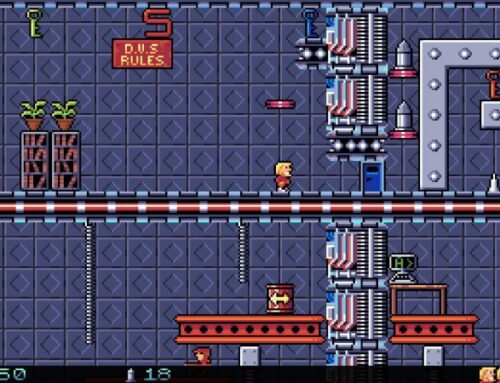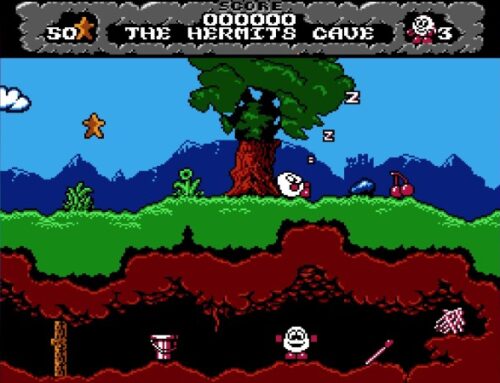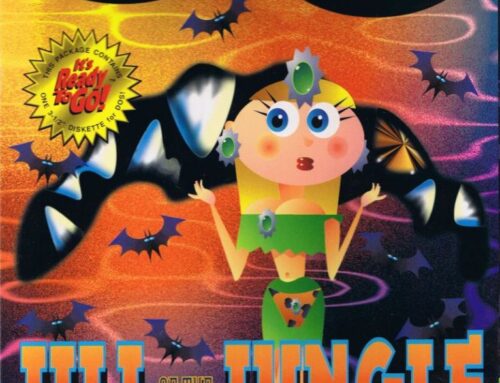One of the best things about the Evercade project, ever since the initial handheld launched, is that it caters directly to a particular type of gamer who is becoming increasingly frustrated with the state of modern gaming — more specifically, the type of gamer who still romanticises the idea of “just buy a game and play it”.
The new Evercade VS TV-connected console has taken this to a whole other level, though. In the Evercade VS, what we have is a console that has the potential to stick around for many years to come — and which should, in theory, never become “obsolete” barring absolutely radical changes in things like how we connect to a TV or the electrical supply.
In other words, if you pick up an Evercade VS right now, you can be pretty sure that it’s probably still going to be fighting fit and serving up plenty of excellent games for you to enjoy years down the line. Elsewhere in the games biz, meanwhile, a lot of hardware seems to be designed with an inherently limited shelf life in mind — whether it be through simple, inevitable hardware failure or the inability to access online services.
So let’s take a closer look at why the Evercade VS is actually one of the best consoles around right now — particularly if you’re one of those “just buy a game and play it” people.
A clear vision

The Evercade VS has a simple function: to play games. To that end, it has two cartridge slots and four controller ports, plus a power input and TV output. Turn it on and it presents you with the games you have on the inserted cartridges, and within a couple of button presses, you’re playing that game.
No Netflix, no YouTube, no social media, no web browsing — nothing that distracts from that core experience of playing classic games. It’s a games console designed in the tradition of the oldest, most classic systems: much of what the Evercade VS is doing can be traced right back to the Atari 2600.
And yet the system still acknowledges the concerns of the modern gamer. Rather than requiring proprietary handsets, a wide variety of USB controllers (both wired and wireless) can be used with the system — a regularly updated, community-curated list can be found here.
No proprietary memory cards are required — everything is saved to the cartridges or the system’s memory.
And while Evercade carts come with lovely full-colour manuals, the Evercade VS’ excellent interface is designed to allow anyone to jump right into most games right away without any “required reading” beforehand. Although there are one or two exceptions to that rule, of course…
No disc drive to wear out

CD-ROM, DVD-ROM and Blu-Ray drives certainly brought more expansive experiences to the world of video games, with each new explosion in available storage capacity opening up worlds of new possibilities for game creators to realise their visions.
But at the same time, they introduced one of the more fragile elements of gaming hardware: the optical drive. While a lot of optical disc-based systems, even dating back to the earliest examples such as the PC Engine CD and Mega CD, are still just about hanging in there, some of them are starting to fail with increasing regularity. The original Xbox, for example, had a number of different DVD-ROM drive manufacturers over its lifetime, and several of those are not only especially prone to failure, they’re a bit of a pain to replace, too.
On top of that you have some systems using proprietary formats like the Dreamcast’s GD-ROM and the GameCube’s mini-DVDs, which will likely be fiddly and awkward to replace if and when they eventually fail.
Meanwhile, a good old Atari 2600 can survive all manner of natural disasters and still boot up Combat. And I suspect the Evercade VS, being devoid of any sort of moving parts, will be the same way.
No dependence on online

While the Evercade VS does have Wi-Fi capability and is able to update its system software via the Internet, there is no dependence on online, and updates are only pushed out when there is something significant and noteworthy to be added to the experience.
Contrast with much of the other software and hardware we get today. Every time I turn my Kindle Fire on I have to go through a “first boot” sequence because it’s updated. Every time I start Spotify it has to reinstall itself because it’s updated. Every time I open VLC it gives me an update notification. And every few days my phone bugs me repeatedly to update it, even when I specifically tell it to shut up.
At present, Evercade VS works fine right out the box with no updating required — though the “day one” update that was developed between the final manufacturing process of the hardware and the eventual release to the public adds some nice refinements that are worth applying. Long-term, the Evercade team are looking at incorporating additional uses of the online functionality — but it’ll never be mandatory to enjoy your Evercade games.
Updates applied directly to physical media

Issues happen, and sometimes problems slip past quality control. It’s fortunate, then, that Evercade’s system updates are also able to update the physical media for the games directly. Yep, that’s right — if there’s a problem with a game on one of the carts, the Evercade VS (and handheld, for that matter) can patch the game right on the cartridge rather than having to download a patch separately.
That means once that update’s on the cart, it’s on there for good — meaning that there’s no need to repeatedly update the game if you take the cart to a friend’s house or run it on a different Evercade system. No other system out there does this — and it’s an absolute godsend from a preservation perspective, since it means it’s possible to archive the physical releases for Evercade in their absolute optimal forms.
Collectable and archivable

And speaking of which, we’ve talked recently about how collecting for modern systems is, in many cases, an exercise in frustration — because in all too many instances, those discs or Switch carts become next to useless from an archival perspective as soon as “post-launch support” bombards a game with endless patches, updates, additional features and downloadable content.
With Evercade, meanwhile, we have the very essence of “just buy a game and play it” — because that’s exactly what you get. In fact, you buy an Evercade cart and you get anywhere between two and 20 games to play right away, no faffing around required.
And when you’re not playing, you have a lovely lineup of consistent-looking stuff on your shelf to admire; a genuine “library of classics” to enjoy. I don’t know about you, but with more and more “games as a service” nonsense heading our way — not to mention the idiotic fad of “blockchain gaming” — but having that library I can quietly enjoy for myself any time without interruption or distraction is going to become increasingly important as time goes on!




